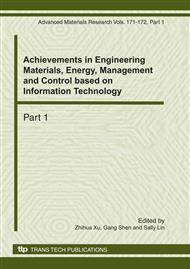p.495
p.500
p.504
p.508
p.512
p.518
p.523
p.527
p.531
Rechear on Solar-Low Temperature Waste Heat Electric Power Generation System
Abstract:
This paper presents our recent research results about a solar-low temperature waste electric power generation system based on Organic Rankine Cycle (ORC) which utilizes solar thermal waste heat at low temperature efficiently. Four organic working fluids such as R13a, isobutene, HFC-245fa and HFC-236ea with boiling points from 247.08K-288.05K are chosen to analyze the performance of the system according to first and second law of thermodynamics under rated conditions. The results show that raising temperatures of high-press gas turbine cannot improve thermal efficiencies of the system obviously, meanwhile the irreversibility of the system increases. And adjusting the intermediate pressure can influence the system's performance importantly. When the reheating pressure reaches the 75%-85% of the critical pressure, the system get the best optimal performance. On the other hand, when the condensate temperature increases, the system thermal performance drops. The higher working fluid boiling points can cause the higher system thermal efficiency.
Info:
Periodical:
Pages:
512-517
Citation:
Online since:
December 2010
Price:
Сopyright:
© 2011 Trans Tech Publications Ltd. All Rights Reserved
Share:
Citation:



